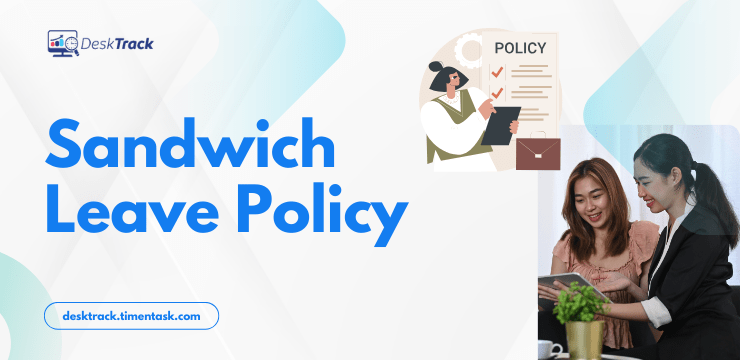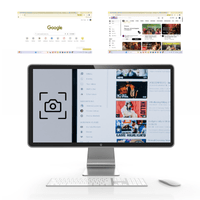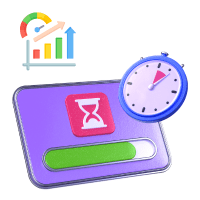
Are you tired of your employees clubbing casual leaves with public holidays to extend their leaves? It is an expensive affair to account for. Your answer is in the sandwich leave policy. However, it is one of the most confusing leave policies out there.
In short, the sandwich policy means that employees are not allowed to take casual leave between public and allotted leaves. Otherwise, all the sequential leaves will be counted as applied time off. However, how does it work? What are the rules? How does it benefit you as an employer? We will know all this in today’s blog. So, let’s get started.
What is Sandwich Leave?
Generally, when we think of a sandwich, it’s that delicious snack made with bread, vegetables, and sauces. Generally, it means to put something between 2 things. According to the Indian labor regulations, sandwich leave means one or more time-off taken between two public, national, or paid holidays. To give you a few instances:
- If a team member takes 2 leaves on Friday and consecutive Mondays, the weekend (Saturday and Sunday) following that Friday comes under sandwich leave.
- A worker taking one or more leaves between 2 public holidays is also considered to be a sandwich (leave).
Read Also: Top 15 Construction Project Management Software in 2025
What is the Sandwich Leave Policy?
A sandwich leave policy compiles all the rules restricting employees from taking time off for a day (s) between national or public holidays. If any employee goes against this, the approved leaves will be underpaid. Plus, the said employee will see a lower leave balance. Furthermore, you can cut the leave balance of a Saturday and Sunday randomly if any employee takes leave on Friday and Monday:
- This policy came into existence to eliminate factory worker turnover and boost engagement.
- It also gets rid of employee mass absence, which is one of the main causes of lower productivity.
- If the sandwich document contains rules for casual leaves, you must notify your employees.
Examples of Sandwich Leave
To better understand the sandwich rule, let’s take a look at 2 real life examples.
- If a worker takes 2 leaves consecutively on a Friday and Monday, then weekends will become paid leaves instead of paid holidays.
- If an employee takes a leave between 2 consecutive holidays, the leave day and the holidays become the same, for which the employee must pay (a 3-day deduction in salary)
What is the Rule of Sandwich Leave?
The Indian subcontinent has not specified any particular rules or restrictions regarding the sandwich leave policy. According to its government, employees can take at least 15 days of paid leave or 1.5 days of PTO for every 20 days of work hours, which the organization provides. Moreover, businesses must announce paid leave details:
- Organizations can individually set up the sandwich policy to eliminate long leaves or prevent employee absenteeism.
- Generally, leave policies differ from state to state.
- Businesses must understand the state-wise laws and compliance before introducing the said policy.
| Note |
| The employees must raise their voice or even go to the management in case the sandwich leave policy is missing in the employment contract or the ESS portal, and the organization still enforces it. |
Advantages of the Sandwich Leave Policy
Integrating the sandwich policy is indeed challenging. However, if you are successful at doing it, you will avail yourself of several benefits, including:
1. Heightened Productivity
As per the Indian labor law, employees can take 2 days of leave for every 20 days of work. However, workers might misuse this right by taking paid time off between public or national holidays, leading to less productivity and employee turnover.
However, the said policy lets employees take sandwiches by informing their employers. Furthermore, it eliminates unscheduled leaves, enhancing employee engagement and productivity. Another way to do so is by using the best employee scheduling software.
2. Decreased Absenteeism
Without the sandwich leave policy, employees will take one or more leaves around public holidays to extend the duration of their happiness. However, this results in mass employee absenteeism, damaging the overall productivity. On the other hand, when the said policy is in place, there is less absenteeism and increased employee engagement.
3. Cost Saving
When employees take paid leave around public holidays, it adds to your overhead expenses as you are already accounting for it by paying employees for national and public holidays and weekends. However, when you apply the sandwich rule instead, employees will automatically take no such leaves due to the fear of their salary being cut.
4. Legal Protection
The said leave policy introduces Indian labor regulations. Workers can take necessary breaks or apply for planned leaves without the fear of discrimination. On the other side of the fence, you, as an employer, get relieved from the fear of:
- High turnover rates
- Reduced productivity
- The risk of leave entitlement disputes
5. Positive Organization Image
Sandwich time off not only results in decreased productivity. However, it also damages the reputation of your business due to irregular workforces, absenteeism, employee turnover, and many other reasons. You know what to do to prevent this now. Don’t you?
6. Employee Retention
As we can already guess, the said leave policy ensures that employees get rewards and recognition, inspiring them to stay enthused at work.
Other Benefits of the Sandwich Leave Policy
There are also some other benefits of the sandwich leave policy, which you may want to know.
- If you think your workers are exploiting the leave policy by clubbing public holidays with working days, then the sandwich leave policy will stop this problem.
- This leave policy also prevents high absenteeism around the holiday season.
- It can also ensure that customer service is not affected. Especially for businesses with global consumers.
- It can also ensure continuous client satisfaction when they and your workers are located in different places.
| Warning |
| If you use the sandwich leave policy improperly, then it can severely damage the trust between you and your employees. So, it is your sole responsibility to inform your employees about the policy. Otherwise, your retention rate will drastically decline. |
Read Also: 9 Types of Flexible Work Arrangements with Examples for 2026
Steps to Manage the Sandwich Leave Policy for Employees
As we mentioned before, implementing and managing the sandwich leave policy can be challenging as sandwich time off occurs between public holidays. Employees may cooperate or voice their concerns depending on various reasons. However, when implemented successfully, it reduces absenteeism and boosts productivity.
1. Make Right Policies
If you plan to implement the said time off policy, ensure that you clearly mention it in all documents and employment contracts. Plus, additionally making your workers aware won’t do you any harm.
2. Optimize Communication
You may tell your in-office employees in person. However, your work-from-anywhere teams must also know about the sandwich policy that you are implementing. For that, you must have a strong internet connection and streamlined communication channels.
3. Maintain Documentation
Maintaining a track of who has applied for sandwiches and whose random time off request got approved can be a tough job. That is, unless you properly document or log this data. Having these records is also good for auditing and other legal purposes.
4. Track Authority
Other than the managers and HRs keeping track of leave balance and history, employees must also be acknowledged for taking the authority to manage requests. This makes it more transparent between employees and employers when implementing the sandwich leave policy.
5. Update & Review
Meanwhile, don’t forget to be compliant with the ever-changing labor laws, which the government updates regularly. So, reviewing and updating your policies at every interval ensures that your business meets all the requirements.
Easily Maintain Your Sandwich Leave Policy with DeskTrack
As if implementing the sandwich leave policy wasn’t hard enough, tracking and managing it is another challenge and can add to the workload of your HRs. However, don’t panic, using DeskTrack’s attendance management software automates leave balance tracking and management to save you time and money. With its real-time attendance tracking feature and user-friendly interface, it ensures that you have all the employee leave records at any given time for payroll and other purposes. However, what makes it stand out is the easy leave policy configuration, which makes the tool adapt to any PTO structure. Try now and realize why it’s the no. 1 choice in 100+ nations.
Frequently Asked Questions (FAQ)
Q. Are Saturday & Sunday Counted as Earned Leave?
Ans. Yes, these days are counted as earned leave and are typically called weekends.
Q. What is the Rule of Sandwich Leave?
Ans. A sandwich leave policy compiles all the rules restricting employees from taking time off for a day (s) between national or public holidays. If any employee goes against this, the approved leaves will be underpaid. Plus, the said employee will see a lower leave balance. Furthermore, you can cut the leave balance of a Saturday and Sunday randomly if any employee takes leave on Friday and Monday.
Q. Is the Sandwich Leave Policy Legal in India?
Ans. Yes, as long as the organizations are announcing the leave details to it, the government has no obligations to the sandwich policy.
Q. Is the Sandwich Leave Policy in the USA?
Ans. The American subcontinent has no federal or state laws that include the use of this policy. In the US, leave policies are variable and strictly depend on the employer. In this regard, American businesses concentrate more on the total days off they provide and not particular configurations.
Q. Is Sandwich Leave Good or Bad?
Ans. Generally, sandwich leave policies often feel rigid and counterproductive. They frustrate the employees instead of increasing their engagement towards work.










